You’re on LinkedIn, but you aren’t getting the attention you want out of the platform.
What’s going wrong?
It turns out that many people on LinkedIn are having the same problem. Their businesses aren’t benefitting from their presence on LinkedIn as much as they could.
In reality, your LinkedIn profile should work like a great landing page. It should give your audience a quick and attractive introduction to your business and tell them exactly how you could help them.
Just how much could your business benefit from a solid LinkedIn presence?
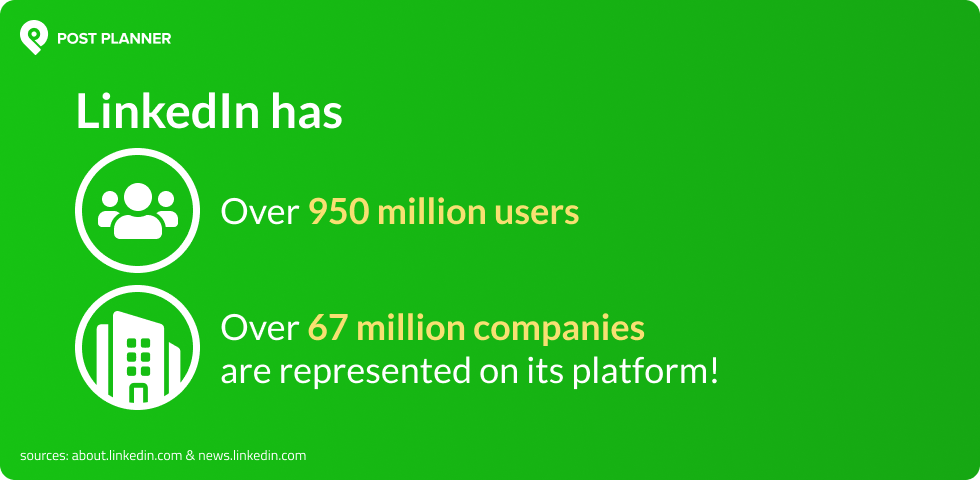
LinkedIn has 950 million users and about 67 million companies on its platform. That means there’s a MASSIVE audience out there just waiting to interact with your profile (if you do it right).
So how do people do it? How do you build a profile that catches users' attention in your niche?
This article will show you exactly how to take your LinkedIn business presence to the next level.
Let’s get started!
We'll cover:
- LinkedIn company vs personal page: which should you focus on?
- 11 tips to create the perfect LinkedIn business profile
- How to blow away the competition with Post Planner
- FAQ
LinkedIn company vs personal page: which should you focus on?
There are 2 main types of LinkedIn profiles: personal and company profiles.
But that leads many people to ask an important question:
“Is my personal LinkedIn profile or my company profile more important for my business?”
Before we answer that question, let’s briefly look at the differences between the 2 types of LinkedIn profiles.
Your personal LinkedIn profile is a must-have for networking, personal branding, and promoting your company. It helps build credibility, gain trust, and showcase your thought leadership. Plus, you can easily share content and receive endorsements from your connections.
LinkedIn company profiles can also be beneficial for promoting your business, generating leads, and recruiting top talent. You'll have access to analytics and advertising options, allowing you to track your performance and reach a wide audience.
Ultimately, you should have both types of profiles, but most people find that they generate MUCH more engagement with their personal profile than with their company profile.
In other words, your personal profile will typically be a better business tool than a company profile, but you should have both to cover all your bases.
11 Tips to create the perfect LinkedIn business profile
So, how do you turn your personal LinkedIn profile into a business-promoting machine?
LinkedIn has a vast audience (as mentioned above), which is excellent for improving your reach, but it also means you must compete with many other players.
In other words, you have to take your LinkedIn game to the next level if you want to succeed.
In this section, we’ll look at 11 tips that'll turn your LinkedIn profile from a stale, lifeless page to a thriving (and growing) business community that drives people to your company.
Tip #1: Catch their eye with a high-quality profile picture
The first step (and one of the easiest things you can fix right now) is to add a high-quality, professional headshot to your LinkedIn profile.
To catch the eye of page visitors, ensure your picture is centered on your head. You should wear business professional attire (unless you work in a more casual industry), and there should not be anyone else in the photo.
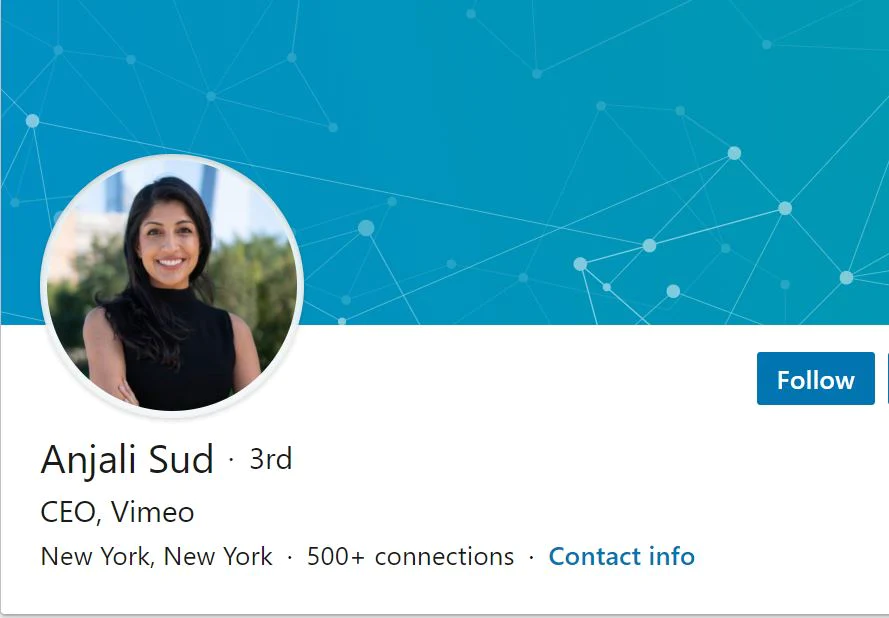
Some people even add colored backgrounds to their profile pictures to stand out.
Your ability to portray yourself professionally and put-together on your LinkedIn profile will directly affect your audience’s perception of you.
The harsh truth is that if you haven’t taken the time to have a good picture of yourself, your audience might assume that you take shortcuts in other areas as well.
Tip #2: Create a catchy headline and banner
There are millions of people and businesses around the world that use LinkedIn every single day.
That means it’s essential that you have something to set yourself apart from the competition.
2 things that can help accomplish this are to have a catchy headline and a banner that stands out from the crowd.
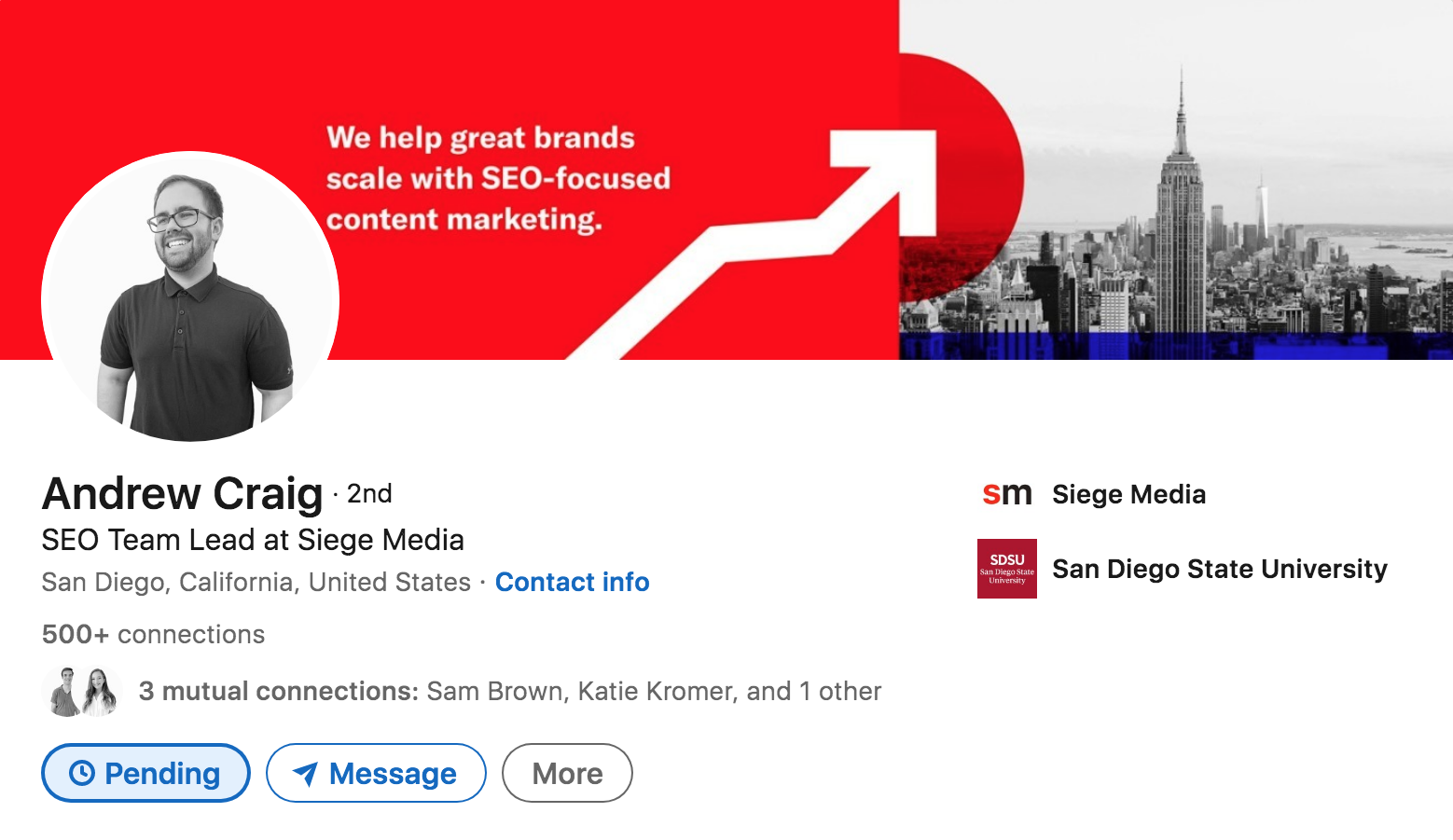
The first thought someone should have when they see your profile should be, “Oh wow, that looks good!” not, “Oh wow, they don’t care about their LinkedIn profile.”
Instead of having a low-quality banner (or worse, the default banner!), the person in the example above has gone the extra mile to set his account apart. He has a simple headline in his personalized banner that helps describe his specific skill and how you can benefit from his company.
It's a best practice to put a value proposition in your header so people know WHY they should follow you.
One simple formula you can use is this:
- "We help [ideal customer] solve [pain] with [service]"
Tip #3: Optimize your profile with keywords
When we work on our websites, everyone knows the value of keywords.
What many people don’t realize, however, is that keywords are just as important when it comes to getting your LinkedIn profile noticed!
By incorporating keywords naturally into your headline, summary, and other relevant profile sections, you can improve the chances that your profile will appear in searches and get recommended to other people in your niche.
The example below shows one way you might go about incorporating keywords into your summary that highlight your skills and chosen industry.
For example, notice how the following About section incorporates keywords involving tech, education, and marketing.
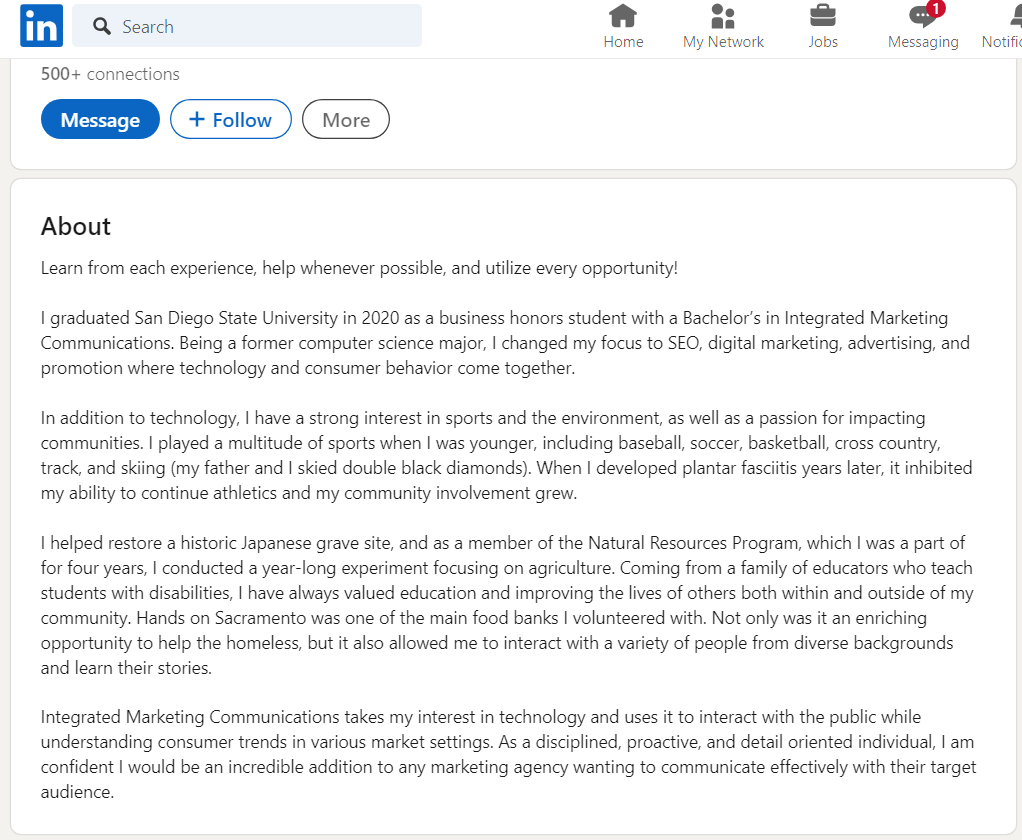
Not only will these keywords give the eyes of employers a familiarity with your expertise and specific skill set, but they also drastically improve the chances that your profile will get discovered by new searchers!
Tip #4: Write a compelling summary that stands out
Your summary MUST grab the attention of whoever reads through your profile.
If you drone on and on with various anecdotes and life lessons, people aren’t going to read what you have to say!
Your summary should include your UVP (unique value proposition), which explains your specific skills and what sets you apart from your competition.
You want to demonstrate your skills and why you’re an asset while establishing yourself as an authority in your field.
Don’t shy away from including a SHORT story to demonstrate the kind of person you are and why you are passionate about your field (and, in turn, how following you will help out whoever’s looking at your profile!).
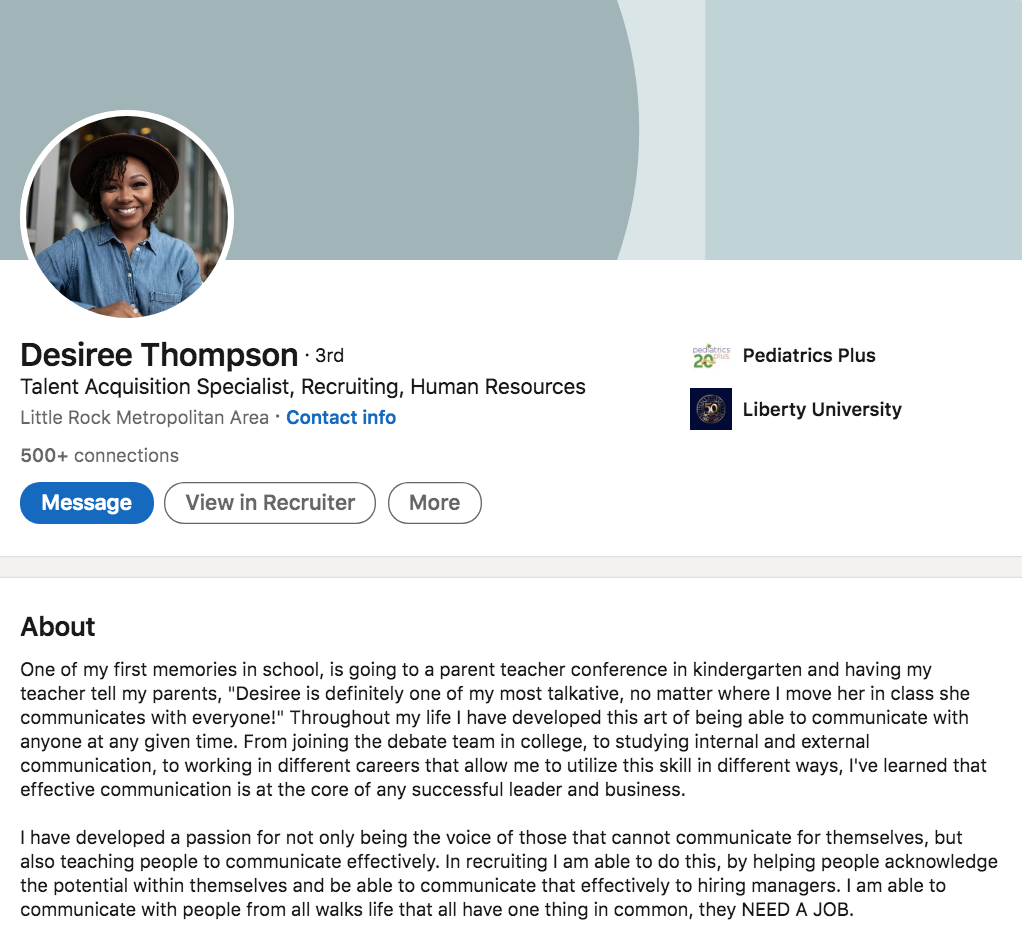
While the summary should be relatively concise, it should be long enough to allow the reader to get to know you. After all, LinkedIn is a SOCIAL network where people are looking to establish relationships.
Your summary should read like a concise sales letter without being overly pushy. Ensure you include a call to action that encourages the reader to take whatever your next desired step is.
Tip #5: Include social proof
Social proof lets your audience know that your business has helped people just like them.
Adding social proof to your profile is all about building TRUST - which is exactly what you need to make sales.
For example, social proof could be something like, “Over 10 million impressions generated since 2018” or “500 5-Star ratings on Yelp.” Just let your audience know they’re missing out on the gravy train if they don’t follow you!
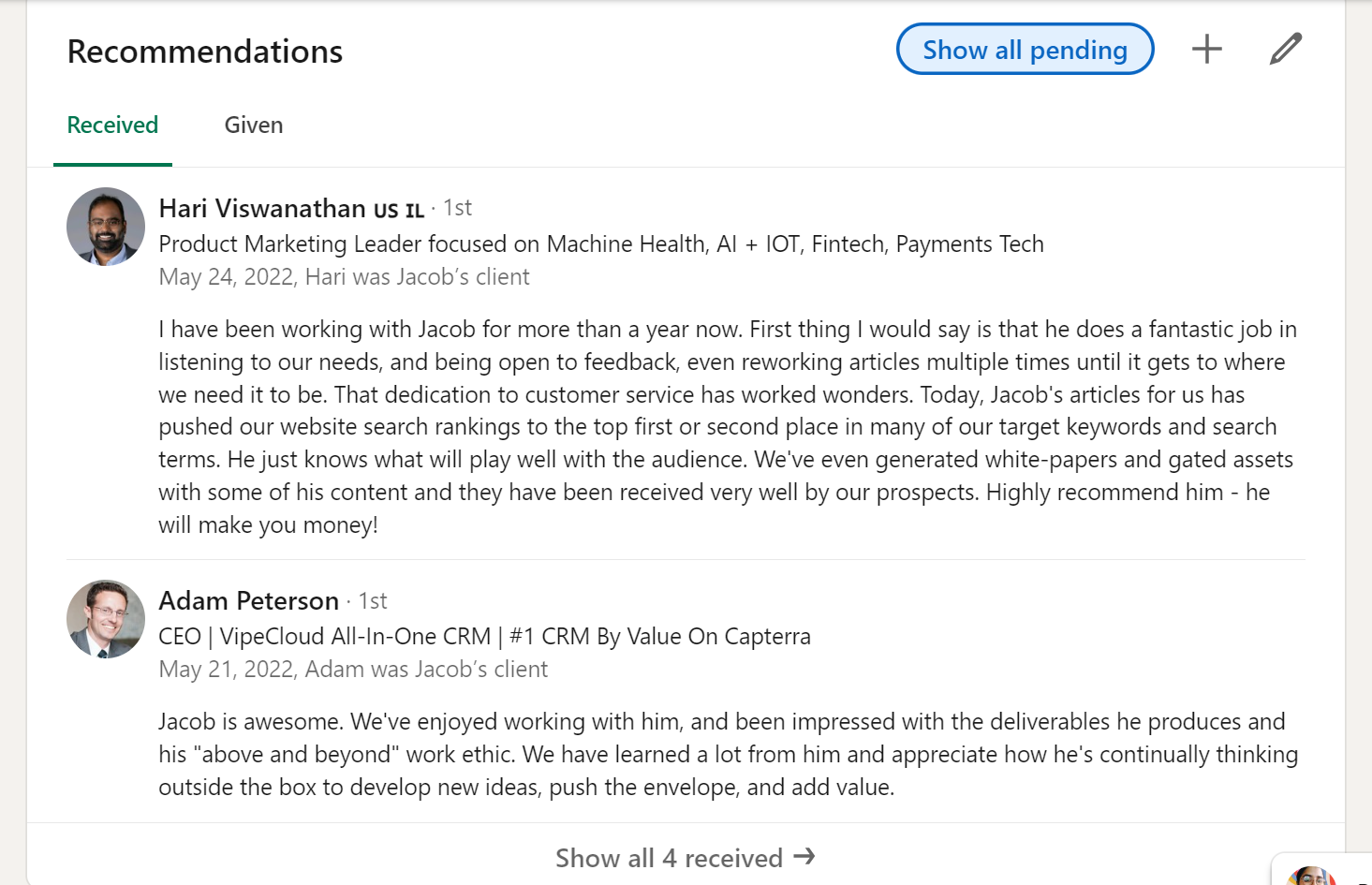
A great way to incorporate social proof is with testimonials/recommendations from past clients and case studies you might have been involved in. They'll be able to see the work you’ve done and the influence you’ve had, and this is incredibly valuable.
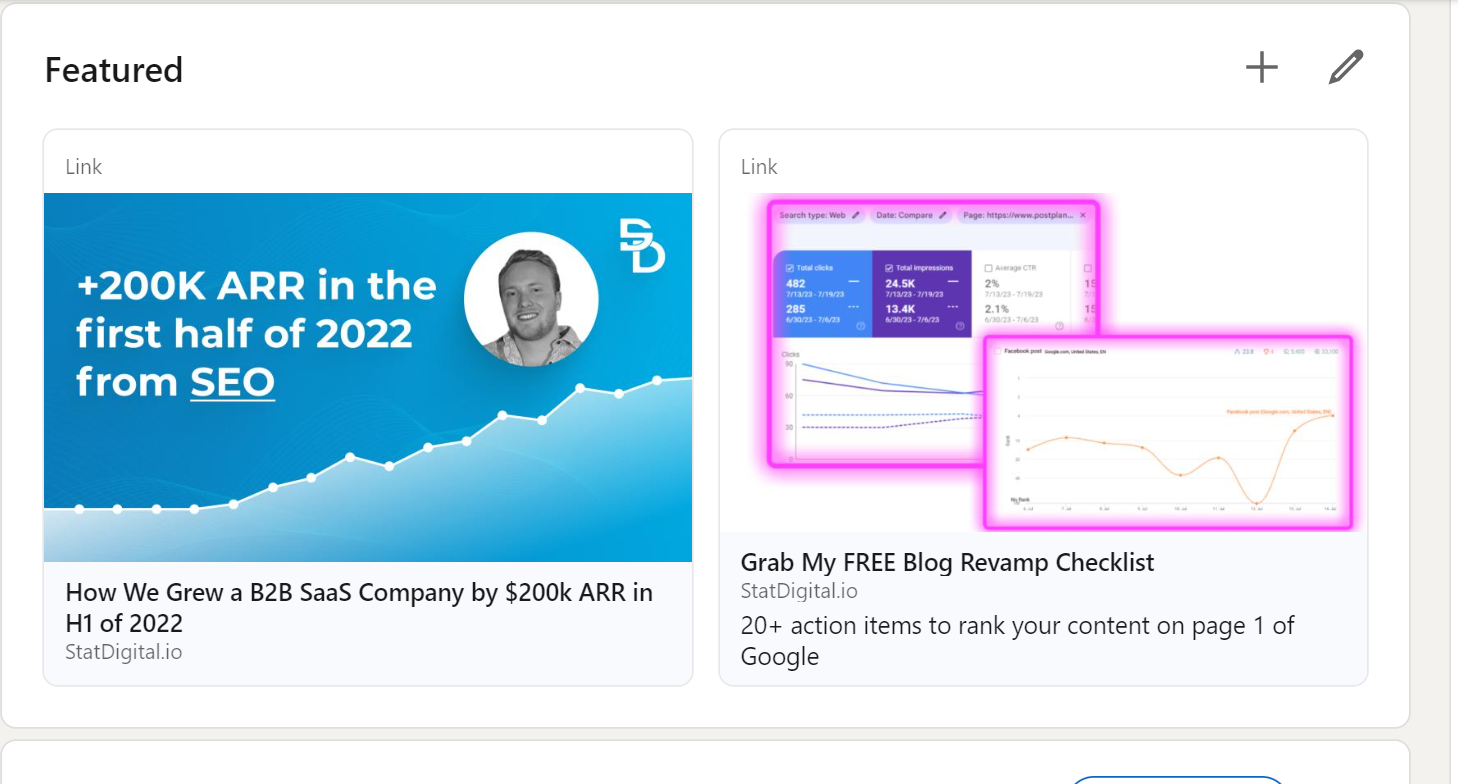
I like to use my featured section as a place to show off case studies.
Tip #6: Connect with other professionals
One of the best ways to build your network (especially early on – before you build up some inertia) is by sending connect requests to other professionals in your industry.
The more quality connections you have, the better your profile looks to newcomers. It also provides direct benefits like more engagement on your posts, better visibility through search, and simply the ability to communicate with more people.
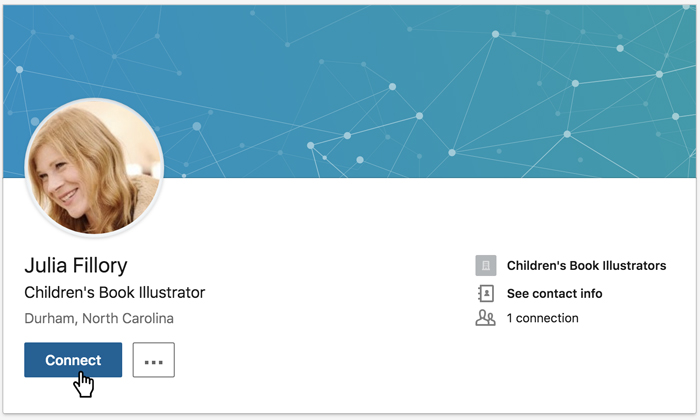
You should constantly be on the lookout for creating potential positive connections.
As a rule of thumb, you should send a maximum of 100 connection requests each week. Doing so will ensure that your network growth snowballs without getting banned by LinkedIn for spam!
Tip #7: Keep your profile up-to-date with fresh content
Similar to any other social media, you should never allow your LinkedIn to stagnate with old information.
As this is your public portrayal in the business world, you should strive to keep it up to date with current and helpful posts. This can include new products or jobs you’re working on, training resources for your followers, or informative material related to your industry.
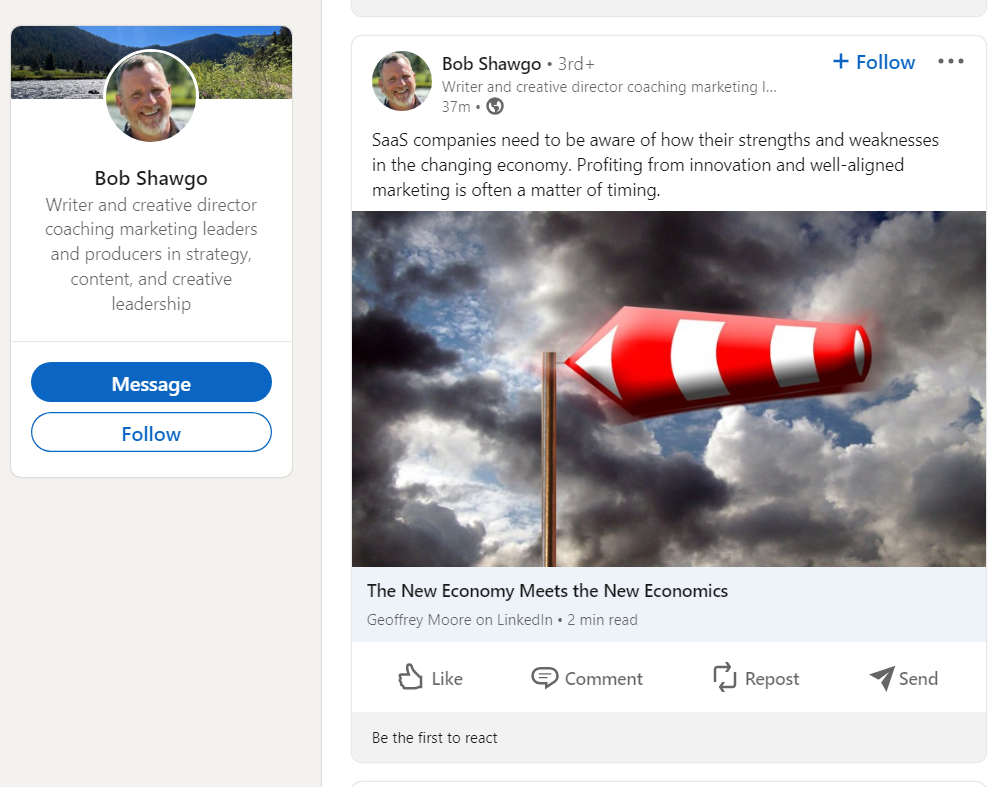
How much should you post?
Every expert you ask will have a different answer to this question, but posting 2-3 times per week is a great place to start. Monitor your engagement to see if posting more or less frequently improves your stats.
We’ll talk later in this post about how to use Post Planner to ensure that you always have a stream of high-quality post ideas ready to post at a moment’s notice.
Tip #8: Prospect for high-quality leads with LinkedIn Sales Navigator
If you’re targeting new leads for sales, you might also be interested in LinkedIn Sales Navigator.
It offers additional features over the standard version of LinkedIn, such as:
- Personalized search algorithms to find highly targeted leads
- Improved visibility into extended networks
- Powerful search capabilities
- The ability to keep track of people and companies and contact them at scale
Sales Navigator is great for someone who needs advanced capabilities for identifying and targeting potential leads. You can also easily import contacts from Sales Navigator into your CRM with highly specific and up-to-date information to tailor your communication.
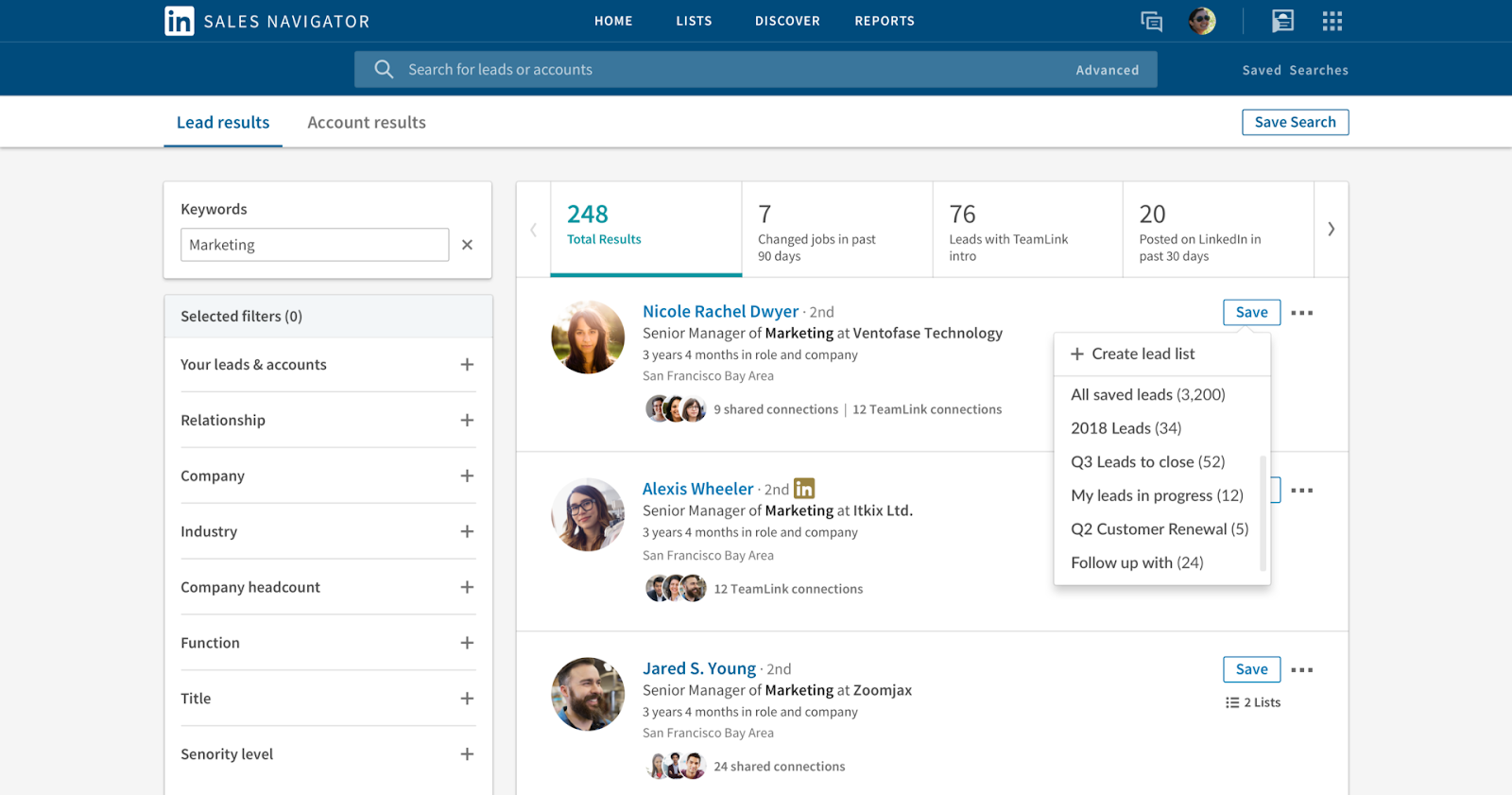
These additional features have the potential to help you rapidly expand your sales efforts by identifying the people who have the most urgent need for your product or service.
Tip #9: Get involved in industry conversations
To get your name out there, you must get involved in industry conversations.
This is just one step in remaining well-connected in your industry, but it's crucial if you want your company to stay relevant.
If you regularly involve yourself in online conversations about your industry, you'll become a familiar face and a credible presence in the industry. People will start to recognize your name over time, come to respect your opinion, and see you as a thought leader.
Becoming a thought leader in your industry = More connections = More sales
Take time every day to comment on some of the hottest posts in your industry, ensuring that you take adequate time to come up with thoughtful and helpful comments or questions.
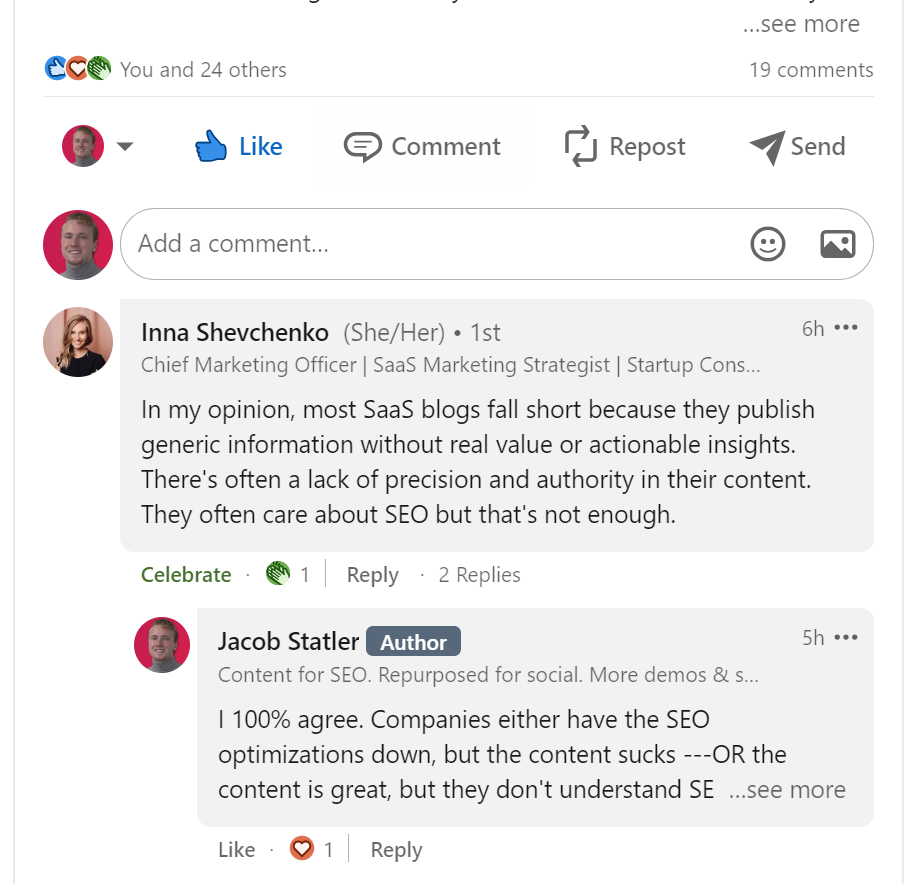
Notice I said, “thoughtful and helpful.” Don’t just comment the fire emoji or “Great thoughts here!” Instead, be insightful and contribute to the conversation if you want to take full advantage of these conversations.
Tip #10: Turn on creator mode if your goal is to grow your brand on LinkedIn
If you're trying to grow your brand using a personal LinkedIn page, you can turn on “creator” mode.
Turning on this feature is free, and it gives you access to additional tools and features that are tailored toward helping you grow your audience base. Some of these features include:
- Eligibility to become featured as a suggested creator
- The Featured and Activity sections move to the top of your profile
- Access to creator tools
- Your “Connect” button turns into a “Follow” button. When people follow you, it sends a connect request, but they will keep following even if you reject it.
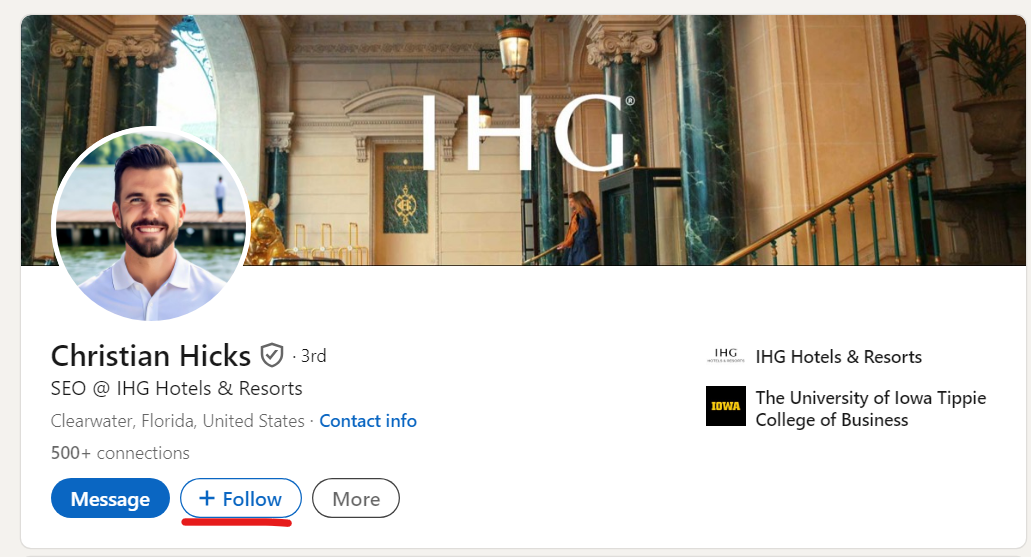
If you plan on consistently posting to your personal LinkedIn profile (which you should), creator mode is a great option to tailor your visitors’ experience and get more engagement.
Tip #11: Create a service page for your profile
An option for personal LinkedIn pages is to create a “service” page.
The appeal of these service pages is that they're free landing pages that are dedicated to showcasing the services that you offer. These pages operate using requests and proposals.
Using this service page, potential clients can contact you for free (regardless of how connected you may be).
In other words, creating a service page on your personal LinkedIn profile gives your audience a way to reach out to you to request your services instantly! It removes the additional steps of going to your website to submit a request by allowing them to complete the service request without ever leaving LinkedIn.
How to blow away the competition with Post Planner
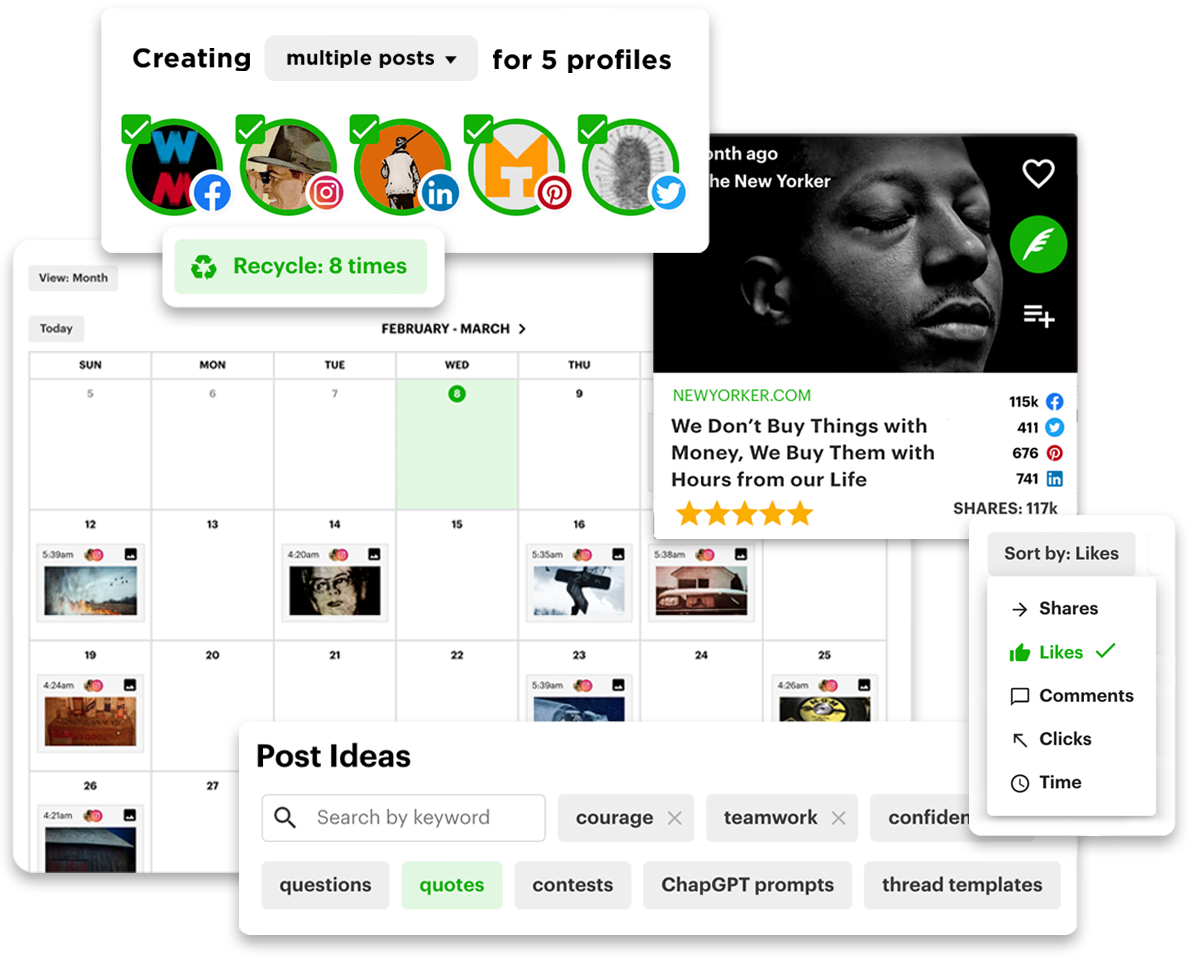
Post Planner is a scheduling tool that allows you to automate your social media posting to your various social accounts.
Not only that, but it also allows you to find and use thousands of great pieces of content. You can use them as inspiration or post them directly to your LinkedIn!
Post Planner now offers a free account that you can use to post up to 3 times per day for a single social channel, meaning this tool is now more accessible than ever before!
There are several ways you can use this platform to level up your LinkedIn presence:
Automate your content discovery
Post Planner has the capability of automatically surfacing thousands of trending posts, viral images, niche articles, etc., across social networks.
To make this ability work for you, just search for content using whatever keywords you’re interested in using Post Planner’s Content tab.
After searching for your keyword, you'll find premade Content Streams with hundreds of recent posts in your niche. If you can’t find any premade Content Streams, simply create your own by adding content sources to a new Stream.
You can easily find the highest-performing content by looking at the star rating assigned to each post. Post Planner assesses how well the content performed with the original audience and gives it 1-5 stars, indicating how likely it is to do well with future audiences.
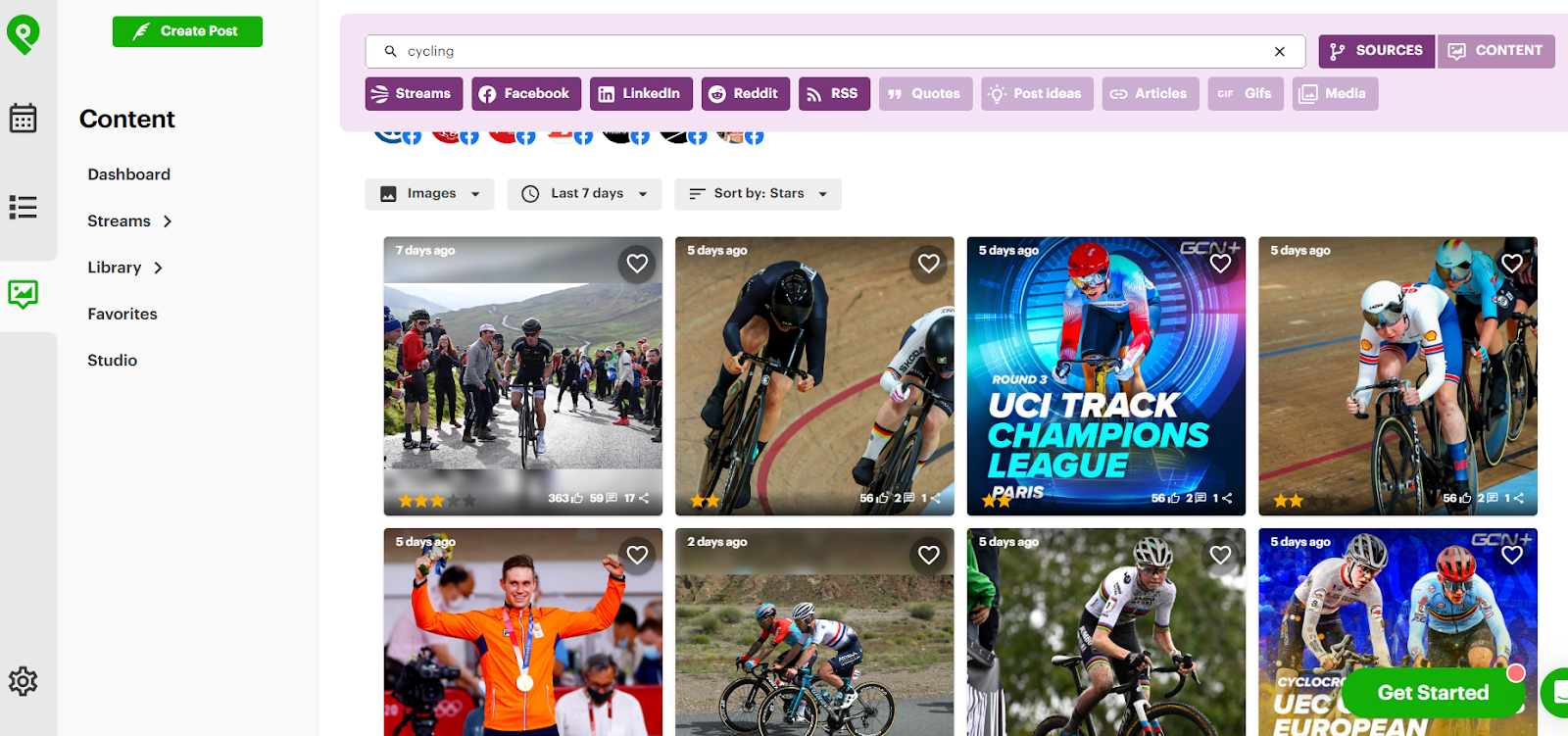
Repeat this process as often as you want to fully automate your content discovery process!
Schedule your content in advance
Post Planner makes scheduling and managing your LinkedIn posts incredibly simple. You can manage all your social media accounts in one place and schedule the exact time and day you want to post your content on each platform.
Use the “Calendar” view to see the posts you have scheduled for the coming weeks and months or the “Posts” view to adjust and edit your posting schedule. You can easily specify:
- When the content will post (time and day)
- What type of content will post in each time slot
- What social media channels the content will post to in each time slot
Additionally, Post Planner allows you to boost the reach of your posts by adding a post “recycling” feature. If you activate this feature, your post will automatically be recycled into your future content plan.
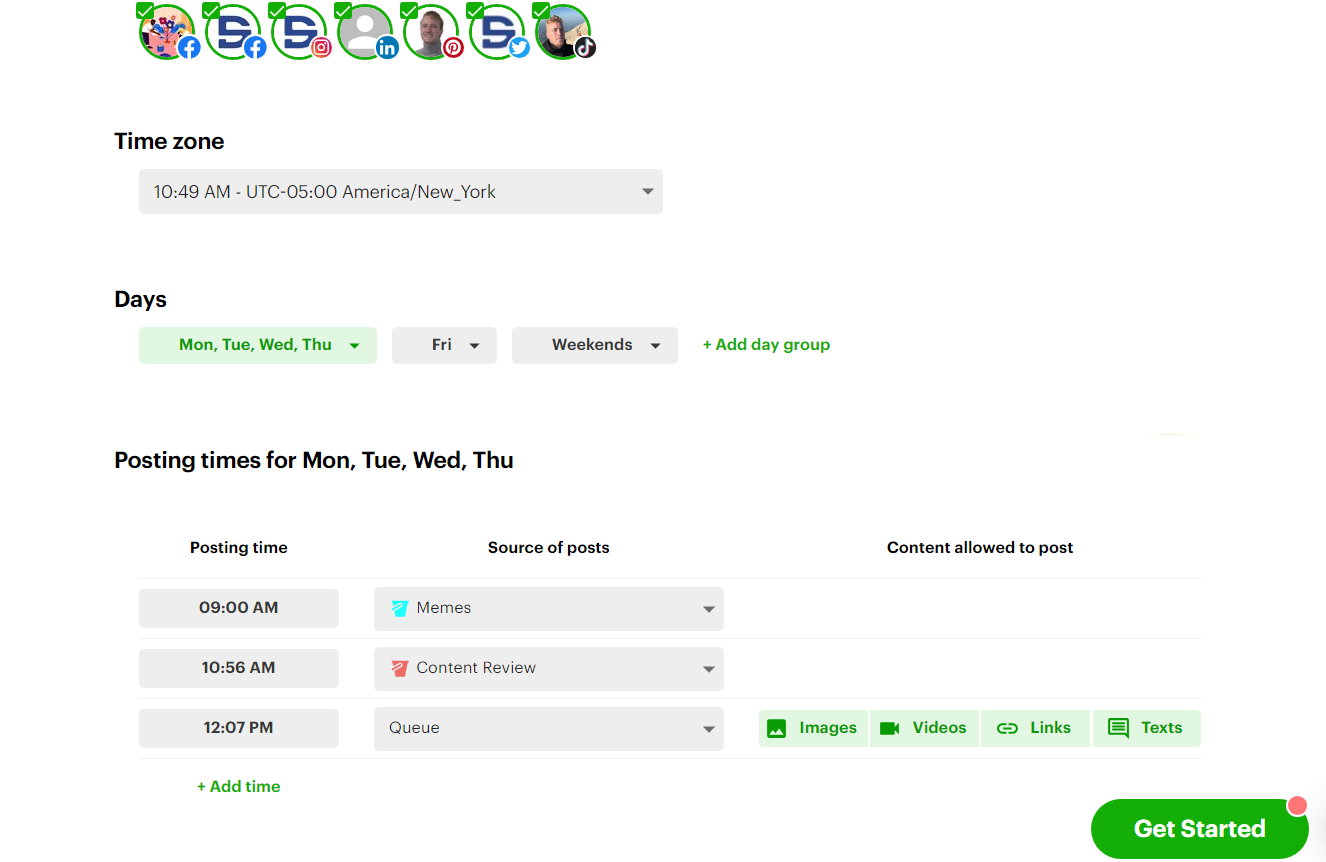
Using these features of Post Planner can save you a ton of time planning and posting your future LinkedIn content.
Easily check your posts’ performance
Post Planner makes it simple and easy to see how many times your posts receive likes or comments. That means you can quickly determine the level of engagement your previous posts received simply by checking on Post Planner.
To check previous posts’ performance, go to the History tab on Post Planner.
From this menu, you can also select multiple posts and add them back into your future queue.
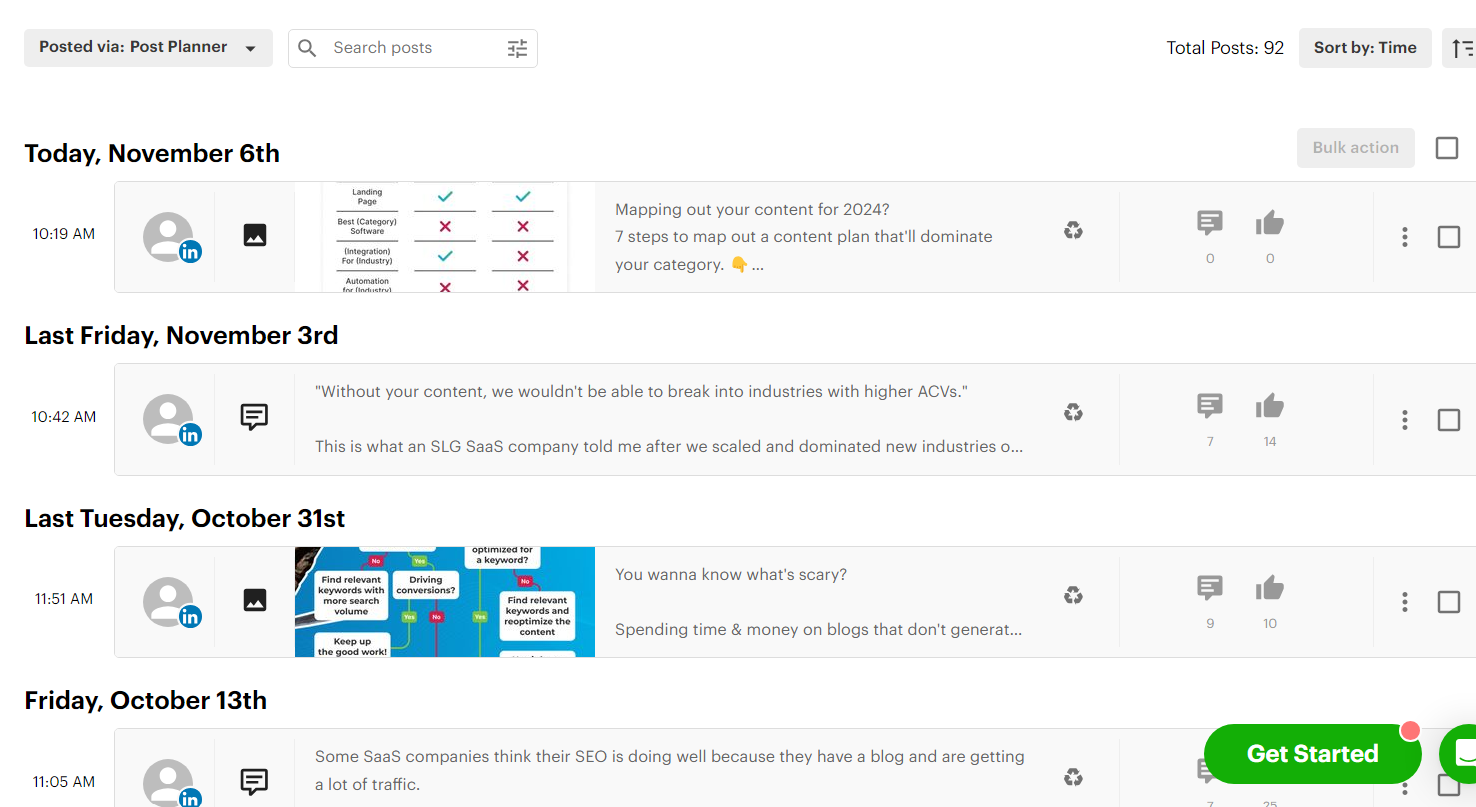
Having the ability to quickly analyze the performance of all of your posts should help you understand what content performs well and what content doesn’t.
Recycle your best posts
As mentioned above, Post Planner allows you to see which of your posts has performed the best across various platforms and metrics.
Based on these numbers, you can choose to repost your top-performing posts further to boost your levels of engagement with just a couple of clicks from the History tab.
You can also recycle a post from the Content Composer. When creating a post, just select the recycle icon and specify how many times you want the post to recycle.
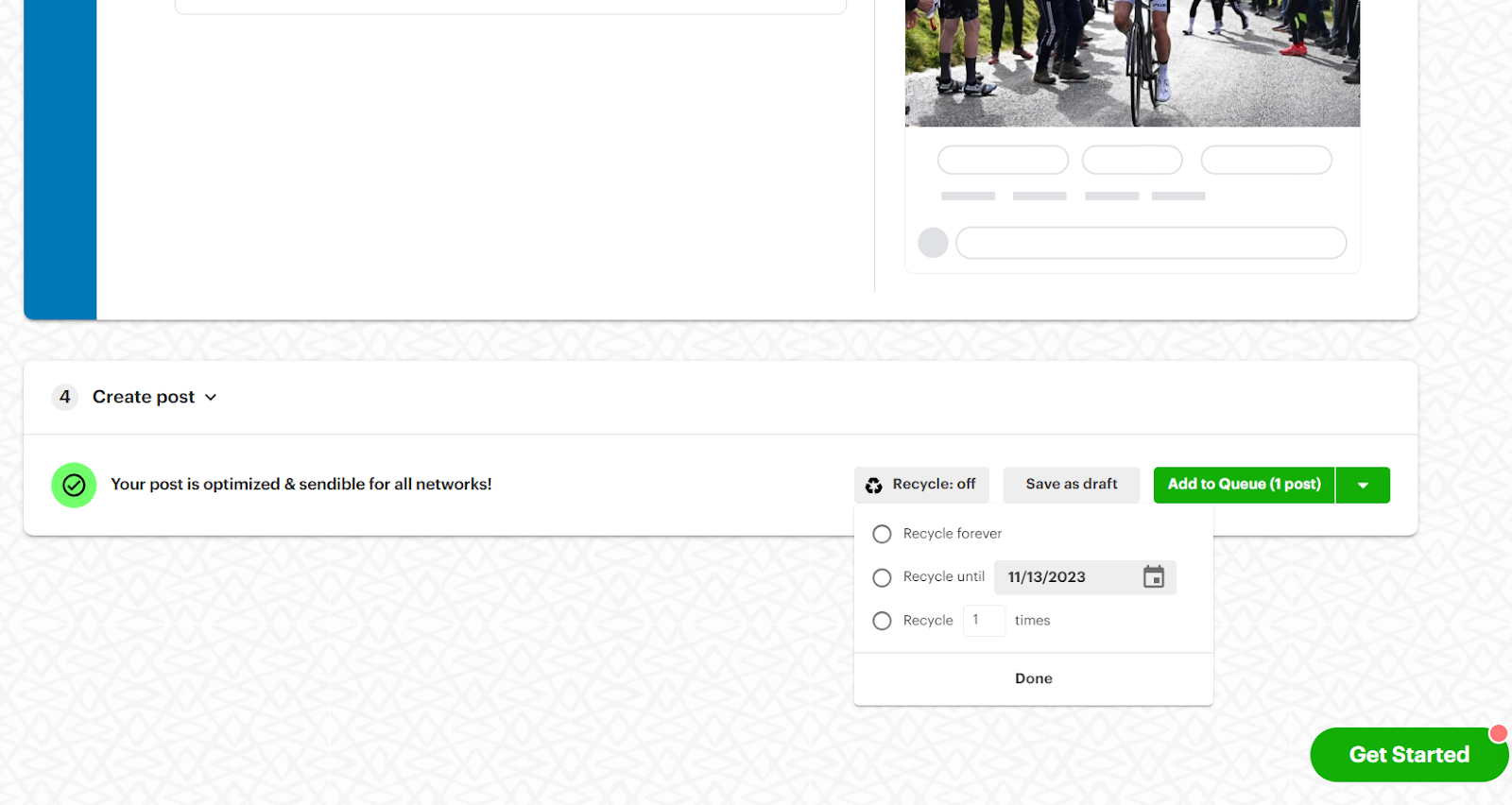
Post Planner does all of the heavy lifting for you to find your best posts, and it gives you the useful option of recycling your most effective posts for further exposure.
Get inspired and create eye-catching posts
Post Planner has immense potential to help you discover great content and get more engagement on your posts, but it can also ensure that your content never stagnates.
Since Post Planner helps you stay on top of the top-performing posts in your industry, you'll always have fresh ideas.
To take that inspiration and turn it into a popular post, go to the Post Planner Content Composer and use the high-quality designer tools to make an eye-catching post with your fresh idea quickly.
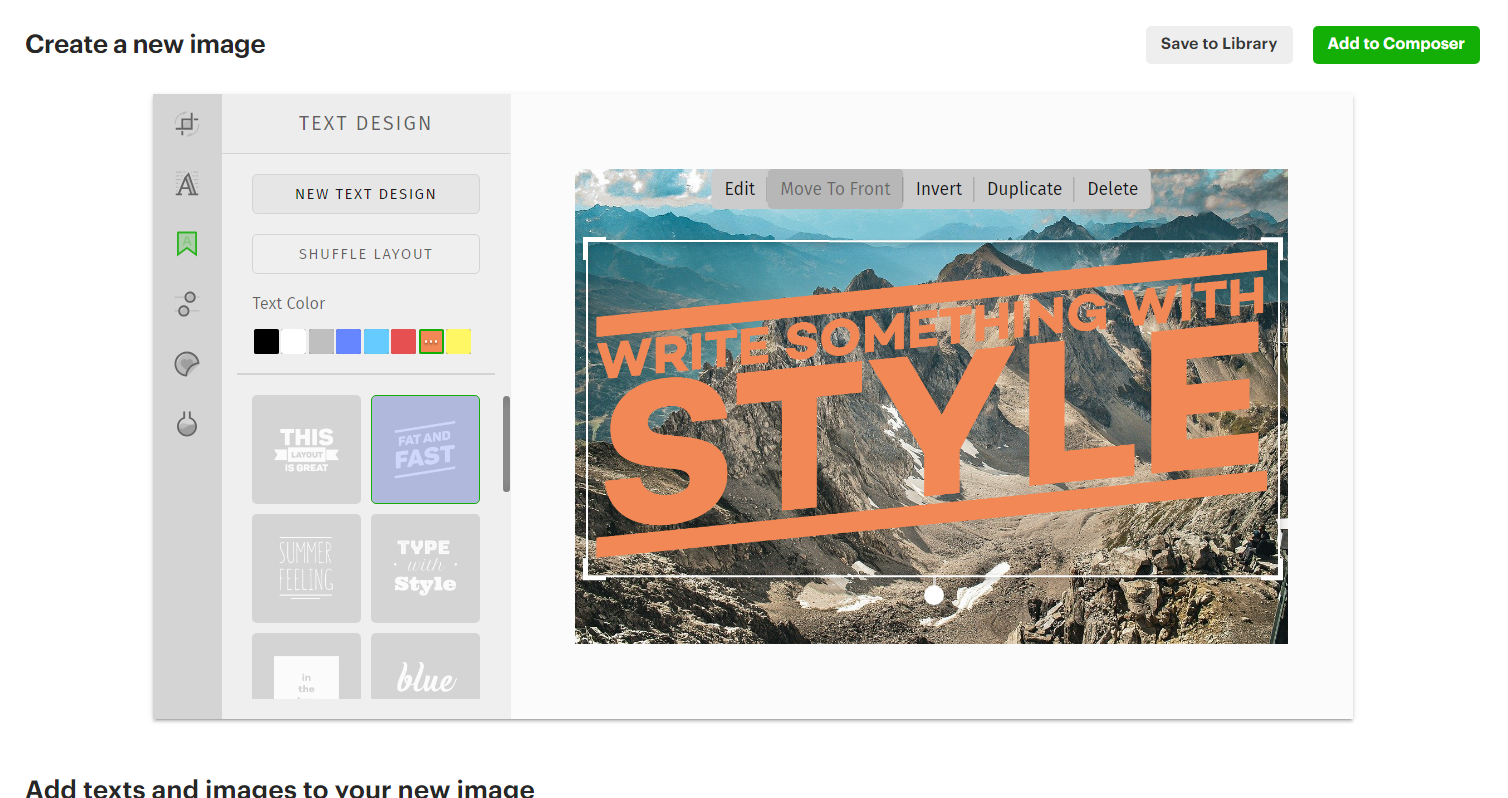
Here, you can optimize visual posts for LinkedIn and add your creative flair to your posts.
Frequently asked questions about LinkedIn Profiles
How do I create a business profile on LinkedIn?
Under the “for business” tab, you can select “Create a Company Page.”
Select that option and fill out the required details to make your new business profile.
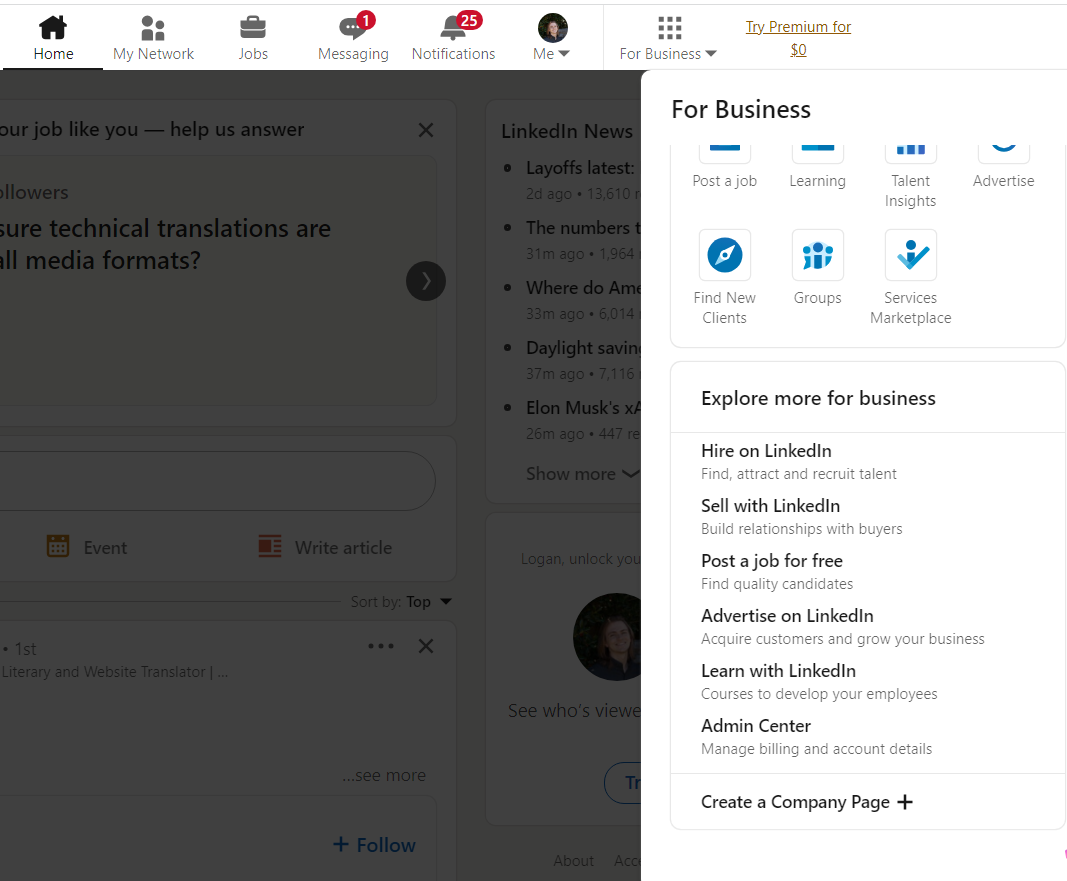
Is LinkedIn for business free?
You can create a LinkedIn business profile for free, but accessing more advanced tools like LinkedIn Sales Navigator may cost extra, depending on what you choose to use.
Can I separate my business page from my personal account on LinkedIn?
In short, yes. Business pages do not have to be linked to a personal page to be created. This is an option that is offered, but it's not required.
Ready to become a networking pro on LinkedIn?
Whether you’re using a business or personal LinkedIn account, following the tips above will ensure you get the maximum benefit from your LinkedIn presence.
By implementing Post Planner, you can maximize the efficiency of your LinkedIn posts (and social media platforms) and discover what post times & topics are best suited for your specific content.
If you still aren’t sure, try signing up for a free Post Planner account to see just how much Post Planner can help you out on LinkedIn!
Good luck!
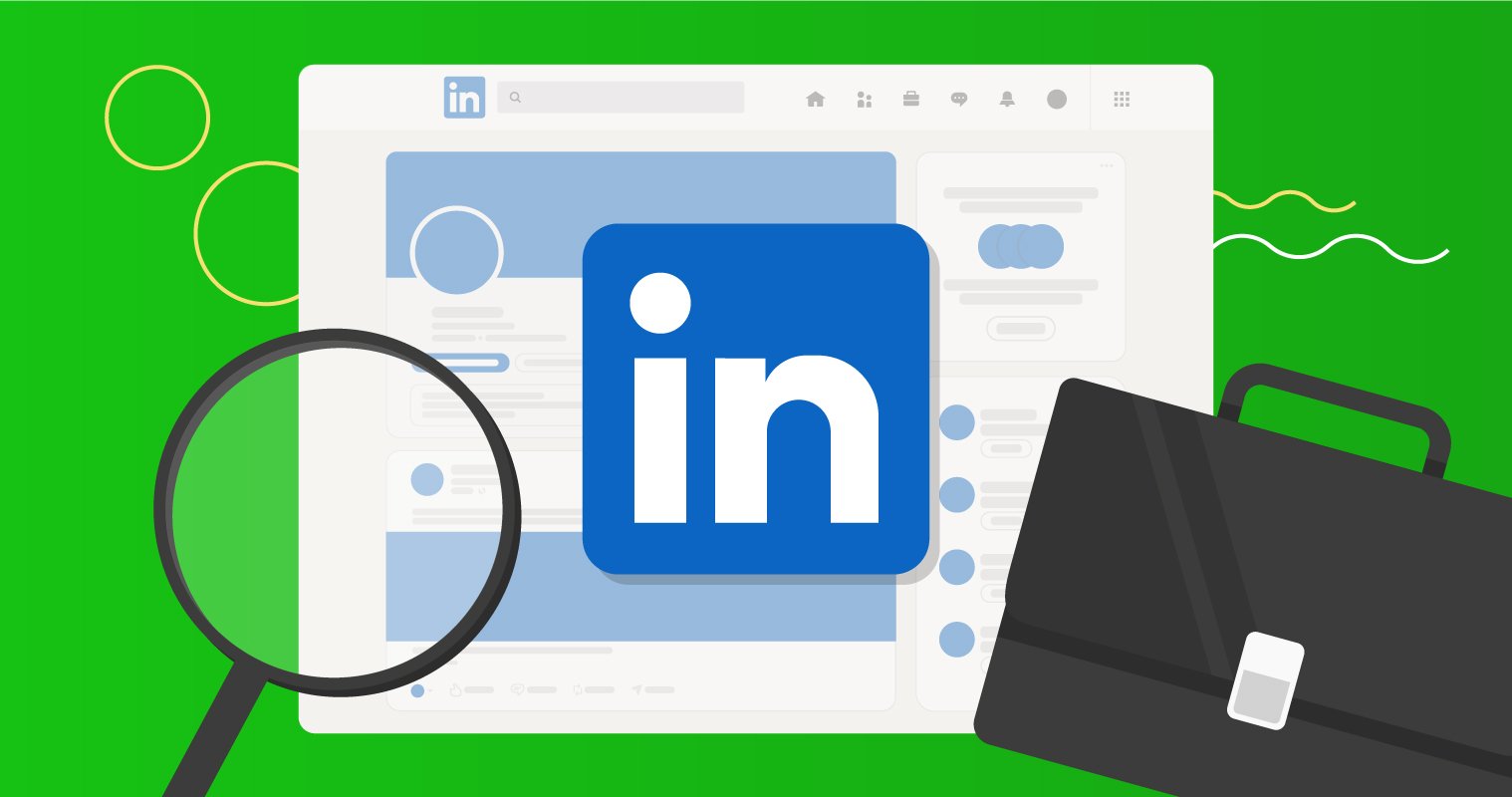






No Comments